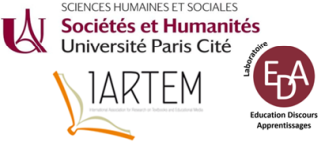Introduction
This article describes a didactic sequence that addresses the teaching of climate change, seeking to promote the literacy process of high school students, with emphasis on how current effects of climate change and its future consequences will affect the planet. In addition, aspects of performative teaching are incorporated for the benefit of generating learning from the body (Taylor, 2011).
The didactic sequence includes seven classes, linked to the subject of Physics within the differentiated training of sciences, for students in 11thand 12th grades, according to the Chilean curriculum of Natural Sciences, specifically regarding the learning objective: "To analyze, based on current and historical scientific data, the phenomenon of global climate change, considering the observed patterns, their probable causes, current effects and possible future consequences on the Earth, natural systems and society" (MINEDUC, 2019, p.195).
Performative Teaching and Learning
There is a need to integrate learning strategies that consider the emotions and feelings of the students, for which it is pertinent to address a resource or approach linked to emotions in their relationship with the body. Performative teaching is used today to characterize all those actions related to bodily practices, so it can be translated as an execution or performance (Taylor, 2011). In this way, performance can also be present in science classes, through a didactic strategy that involves a disruptive action within the class, that escapes from normativity and that has the body as its main materiality.
Description of the didactic sequence
The sequence includes seven classes (90 minutes each). The first is called "Climate-Changing Natural Phenomena," which addresses concepts such as weather and climate, seasons, and the elements that characterize climate. The second one entitled, "The Greenhouse Effect" seeks to establish that the excess of Greenhouse Gases (GHG) is responsible for the increase in the average temperature of the planet, and then, in the third session called "Human factor and its relationship with climate change" to be able to reflect on the role of humanity in the increase of GHGs and motivate students to mobilize for Climate Change. In the fourth class of the sequence, which is called "Climate Change in Chile", the course is invited to demonstrate the impact of Climate Change in their territories, contrasting their experience with that of older and younger relatives.
It is from the fifth class where the sequence takes on an evaluative character, this is called "Reporters for Climate Change" and contemplates the audiovisual production of a report, in the elaboration of which the entire course participates forming commissions. Approaching the end of the design, in the sixth class called "Preparing for the Climate Change Fair" where the students are organized for the realization of a day that seeks to raise awareness and dissemination about Climate Change with the educational community, in which all the products of the previous classes will be exhibited and that has the participation of the students in a role of experts in Climate Change. In the last class, called "Climate Change Fair", he contemplates only the implementation of the fair.
Validation
For the validation of this sequence, the expert opinions of three in-service physics teachers, who have at least five years of teaching experience and who have taught physics in secondary education, were incorporated. With this objective, a Likert scale assessment survey was developed that contemplates different aspects and criteria to evaluate the activities, resources used and elaborated for the didactic sequence.
Projections
As a projection, given that this sequence was designed to be implemented during the Covid-19 pandemic (online classes), the possibility of adapting its design to in person (or hybrid) classes is raised, according to the current work system of schools. In addition, since this proposal addresses performative teaching only in the last classes, it could be nourished by being restructured from a performative approach that considers it a central and transversal element throughout the sequence. From the publication of the sixth report of the Intergovernmental Panel on Climate Change (IPCC), this sequence could incorporate an update of data, attributed to the causes, consequences, acts of mitigation or adaptation of this problem that are raised in it.
- Poster
- Picture

 PDF version
PDF version

